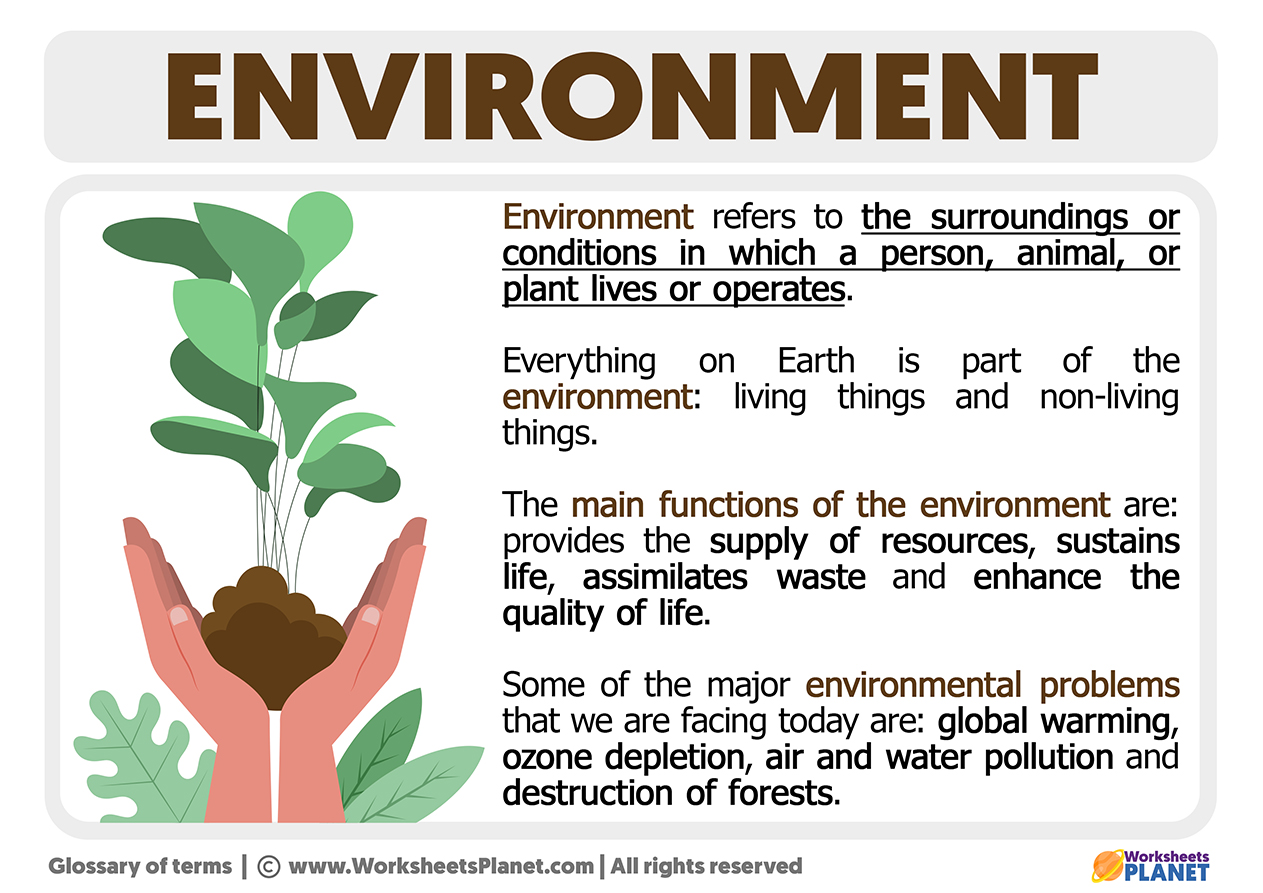The environment is the group of natural and artificial elements that make possible the presence of human beings and other organisms in a given space and time.

The environment involves all living and non-living organisms or things and the physical characteristics of the place. It also includes human transformations, such as houses, roads, buildings, bridges, and decorative elements.
These components interact with each other, individuals, and the community in which they exist, determining their relationship and survival. Therefore, the environment is a set of standards and essential societal goods.
The Environmental characteristics and its parts
The environment has two main factors, biotic and abiotic factors. Biotic factors are represented by living beings in the environment: plants, animals, fungi, and other nature microorganisms.
Light, temperature, water, air, and terrestrial relief are part of the abiotic factors of the environment. They are those physical elements that affect the life of organisms in their environment.
Things people use from nature are called natural resources. Natural resources are used to satisfy our financial, social, and cultural demands. They are classified in:
- Non-renewable natural resources: These kinds of resources have a limited exploitation period since they do not regenerate. For example, minerals (like gold or silver), coal, and oil.
- Renewable natural resources: are those that re-emerge in nature through a cycle of reproduction. For example, flora, fauna, water, and soil.

